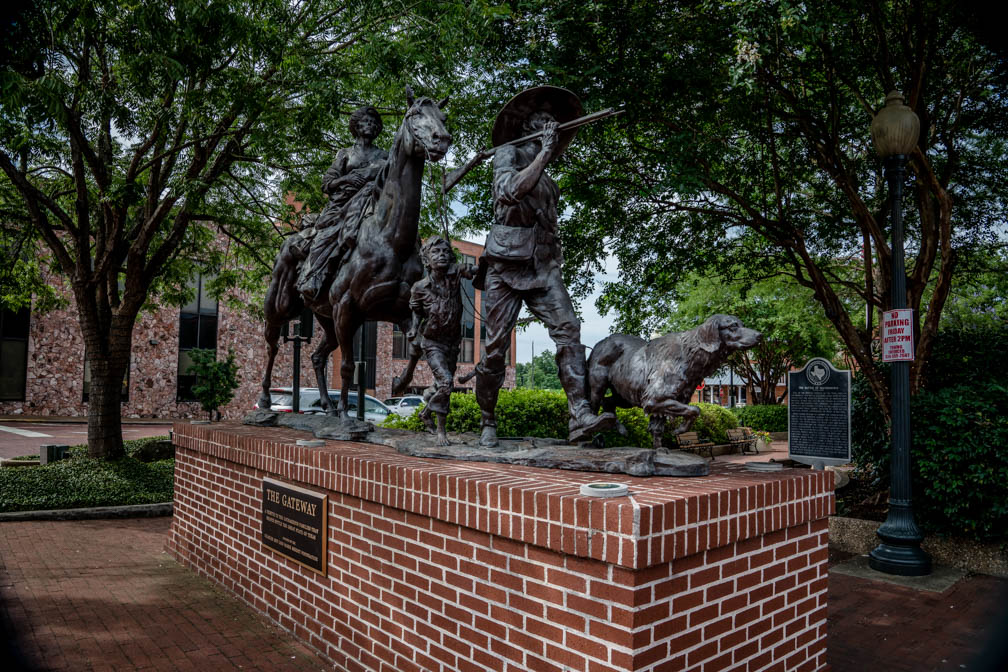Whenever we get a chance to explore a city, I try to come up with a theme to photograph. I first thought I would roam around the campus of Stephen F. Austin University, then I considered documenting the historical buildings, but as I made my way to downtown, I noticed there were several wonderful statues placed around town. I went to the Visitor Center in hopes of finding a map for the statues. The Friends of Historic Nacogdoches put a great pamphlet together called the “Statue Trail”, with a map and descriptions, and some had plaques with more information. I thought this would make for a great theme so I started out finding and photographing the statues.
Nacogdoches claims to be the oldest town in Texas, being founded in 1779. Caddo Indians lived in the area before the Spanish, and still do today. The Caddo tribe came to East Texas around 800 A.D.
Gateway
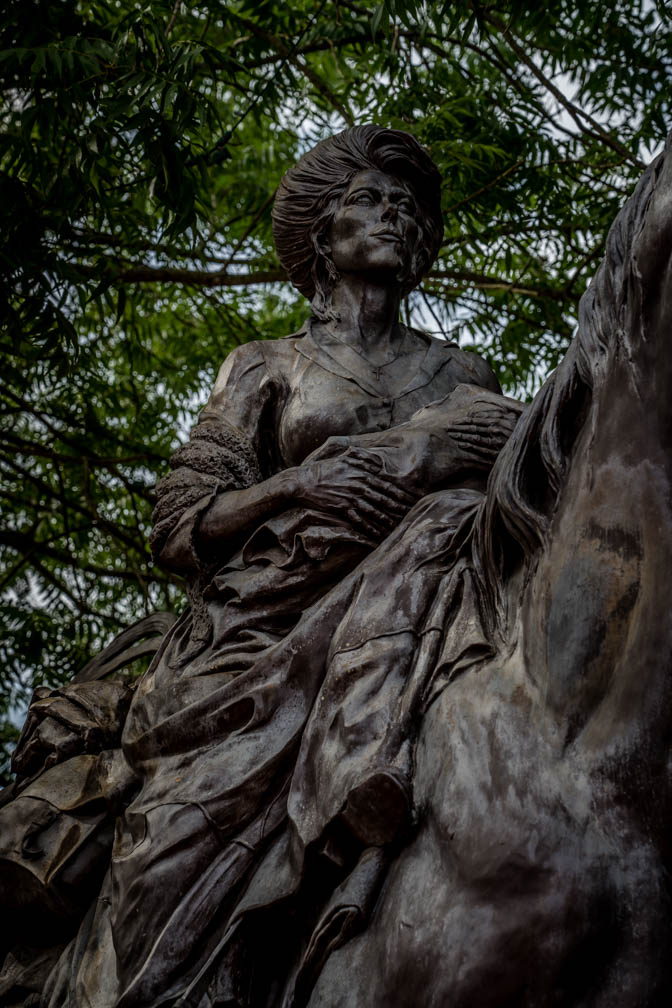
“Gateway” is a gift to the city from the late Charles Bright. Sitting directly in front of the historic Town Center, the statue highlights the fact that, in the early days, most settlers traveling west went through Nacogdoches. Mr. Bright, a successful local businessman and community servant, contributed his leadership and significant gifts of money for the good of the community.

Antonio Gil Y’Barbo
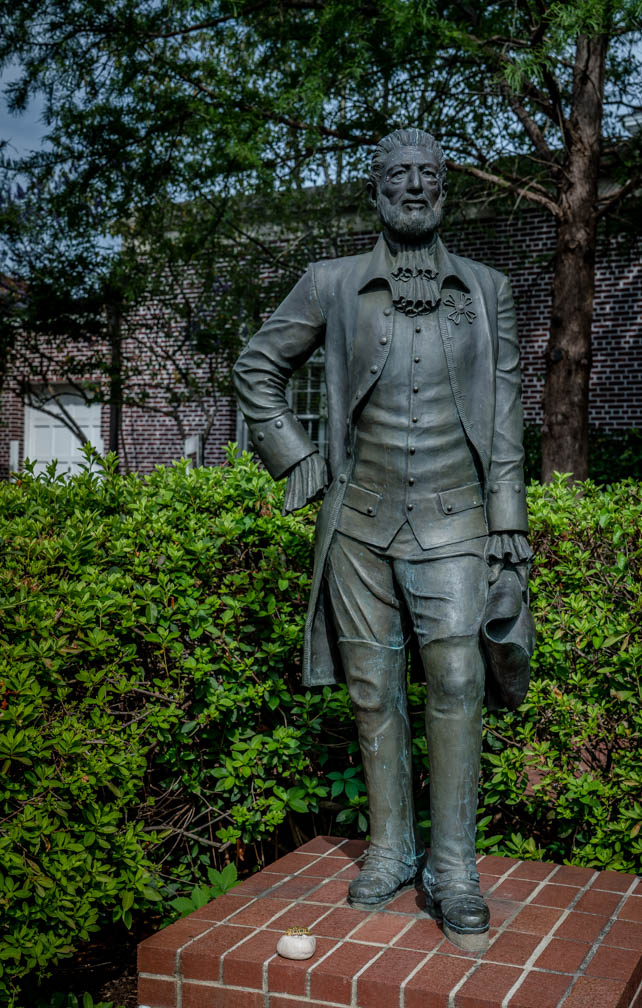
“Antonio Gil Y’Barbo” brought 300 families to settle in the little valley in East Texas known as Nuestra Senora del Pilar de Nacogdoches in 1779. They established their homes at the site of the old Nacogdoches mission which had been founded by the Catholic Church in 1716. Y’Barbo’s “Stone Fort” continues to be a valued historic site in Nacogdoches.
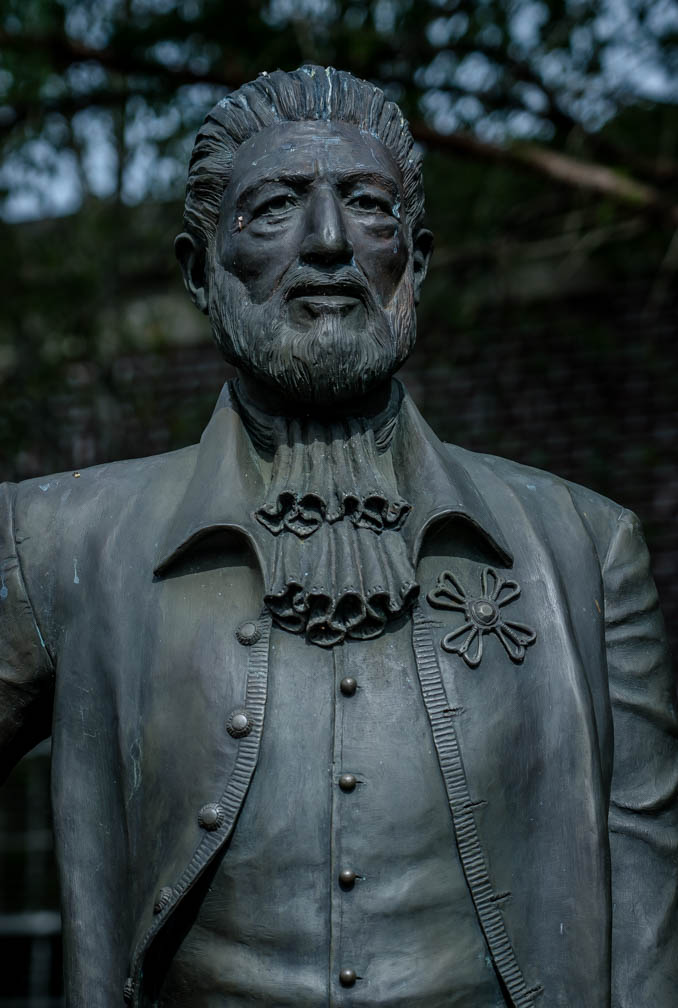
Born in 1729 in Los Adaes Province of Texas. Died in 1809 at La Lucann, his ranch on the Attoyac Bayou.
Thomas J. Rusk
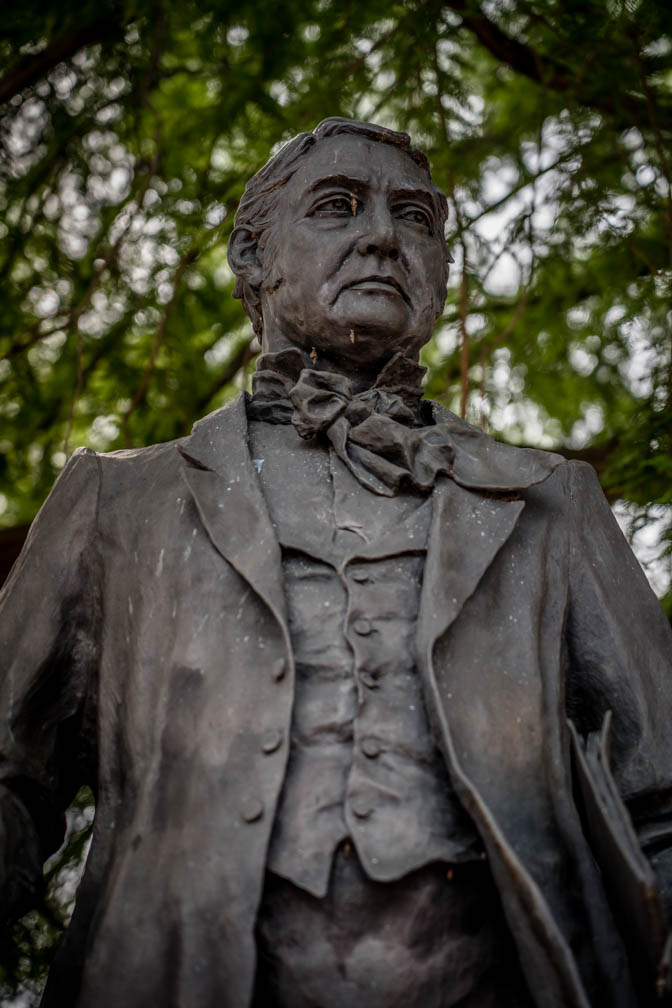

“Thomas J. Rusk,” a prominent early Nacogdoches lawyer and local businessman, came to Nacogdoches in 1835. Along with Sam Houston, Rusk was responsible for a truce that lasted through the period of the Texas revolution. He served as Secretary of War for Texas and later he served as a U.S. Senator.
Sam Houston and Chief Bowles
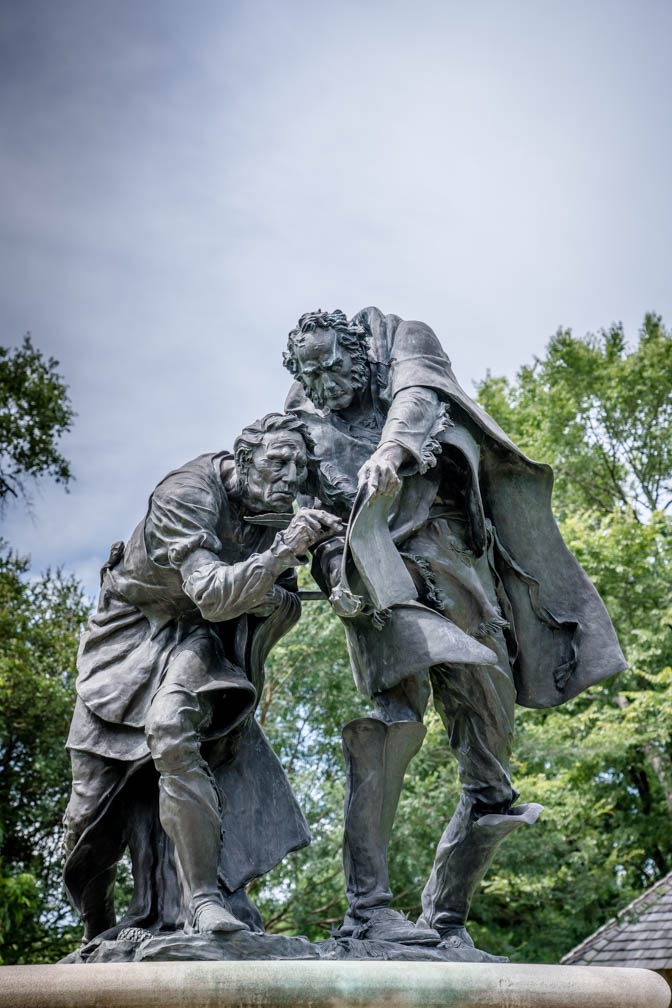
Sam Houston came to Nacogdoches in 1832, which was his first Texas residence. He was the general who led the troops in a battle that defeated Mexico and earned independence for Texas. He served as the first president of the independence for Texas. After annexation, he served as a U.S. Senator. Chief Bowles, or Di’wali, as he was called by his people, was the chief of the Texas Cherokees.

“The Treaty” The date was February 23, 1836, and the situation for Texas was desperate. Santa Ana with about 6,000 troops was on the march towards the Alamo with the intent of smashing the small, poorly-organized, and ill-equipped army of Texans along with their fledgling government. Fearing an alliance between Mexico and the Indian tribes, the Texas government sent its envoys to meet with the East Texas tribes, hoping to negotiate a treaty designed to keep them from fighting on the side of Mexico and remain neutral.
Running to the Fight

“Running to the Fight” is another gift from Mr. Charles Bright to the citizens of Nacogdoches. His will established the statue, and his estate funded it. The statue memorializes Texas soldiers of the Nacogdoches District who fought Mexico to successfully gain Texas independence.
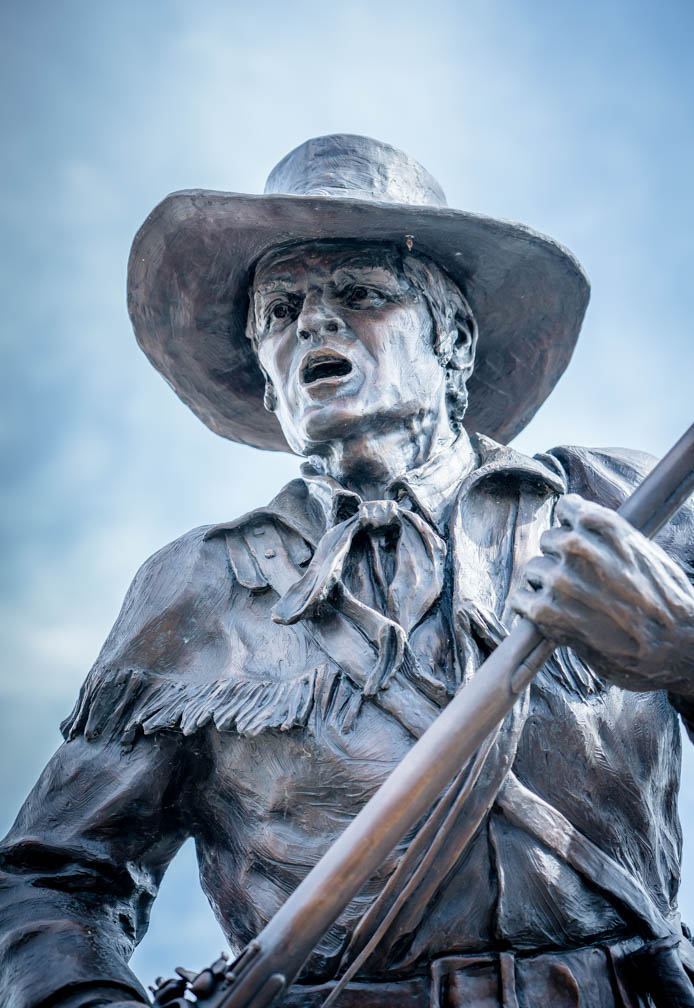
“RUNNING TO THE FIGHT” In honor of the men from the District of Nacogdoches who fought for our Texas Independence. – The Charles and Lois Marie Bright Foundation.
Diedrich Rulfs
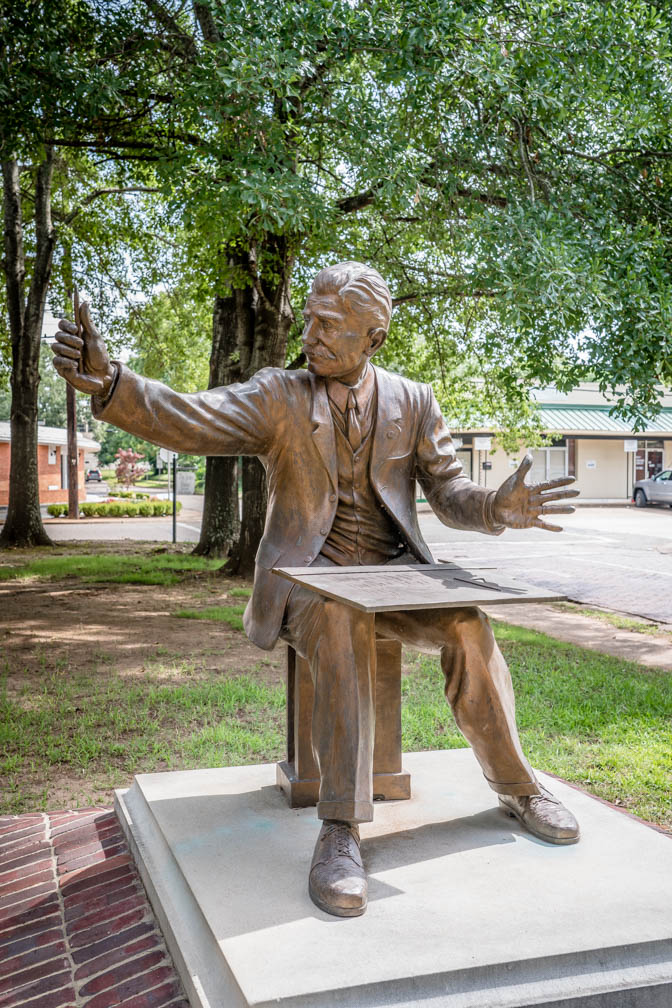
“Diedrich Rulfs” was an architect from Germany who came to Nacogdoches after the Civil War. Historians agree that before his death in 1926, he literally transformed the visible heritage of Nacogdoches. Many Rulfs structures remain in Nacogdoches today.
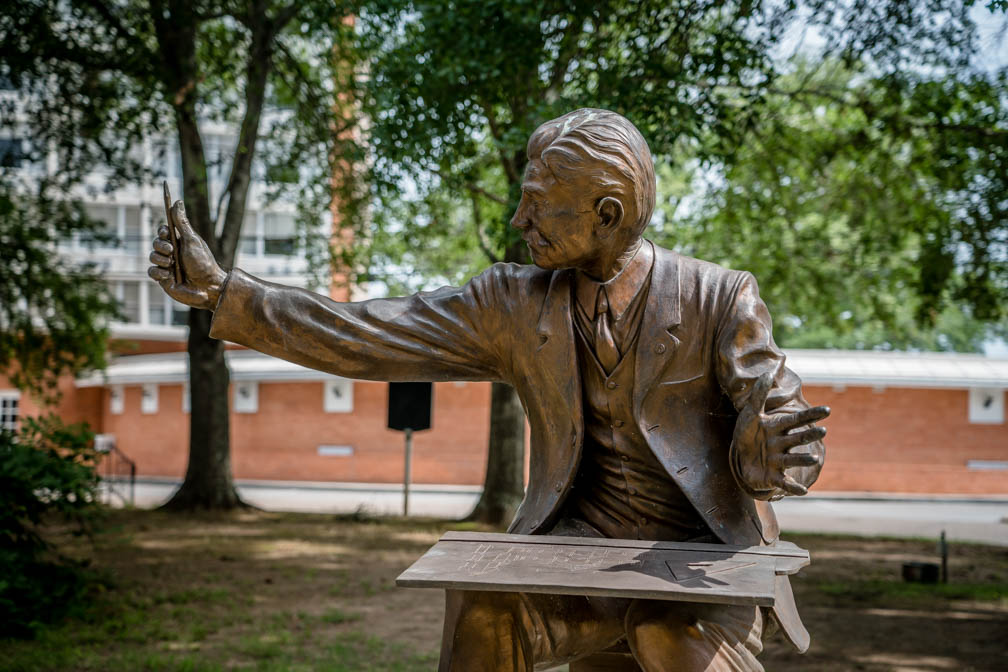
Master Architect Diedrich Rulfs was born in 1848 in Stollham in the German Province of Oldenburg to Helene and Gerhard Rulfs. His father was a carpenter. Diedrich married Johanne Emilie Boschen in 1873, and had three sons. In November 1880, Diedrich, Johanne, their three sons, and Johanne’s mother and younger brother emigrated to the United States aboard the steamship Nurnburg. They proceeded by steamboat to Jefferson and by wagon to Nacogdoches, where Johanne’s brother William Boschen had already settled.

He is located at a house that he actually designed and still stands on Church Street.
Karle Wilson Baker
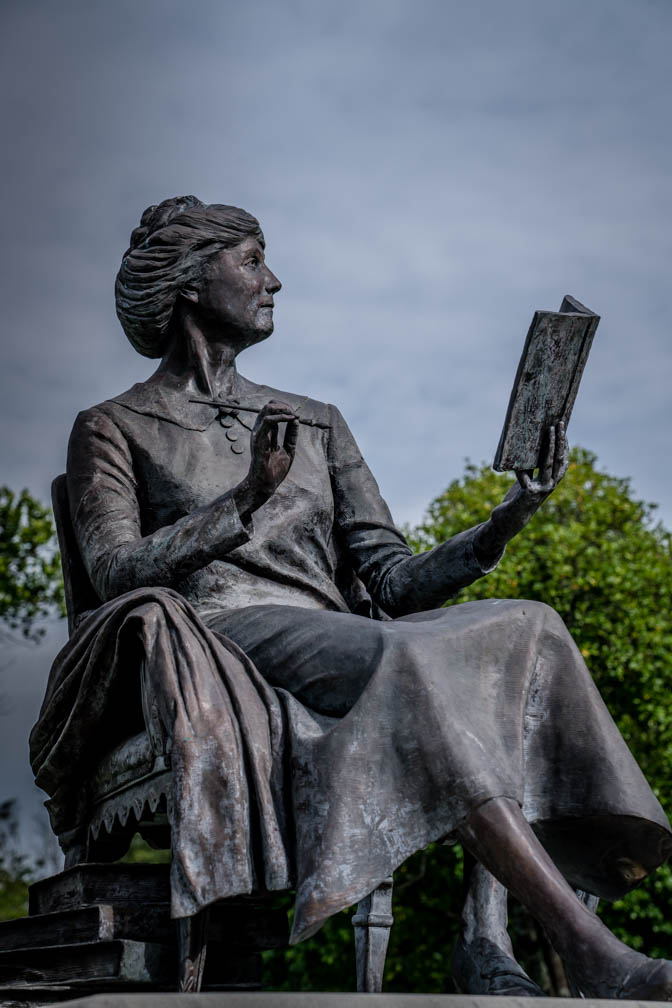
“Karle Wilson baker” was a writer, professor of English at Stephen F. Austin State University, and the city’s most famous poet. Among her several published books of poetry is Dreamers on Horseback (1931). After its publication, she was nominated for the Pulitzer Prize. She was president and Fellow of the Texas Institute of Letters. Her poem, “Growing Old” is found in many anthologies of poetry.
The Country Doctor
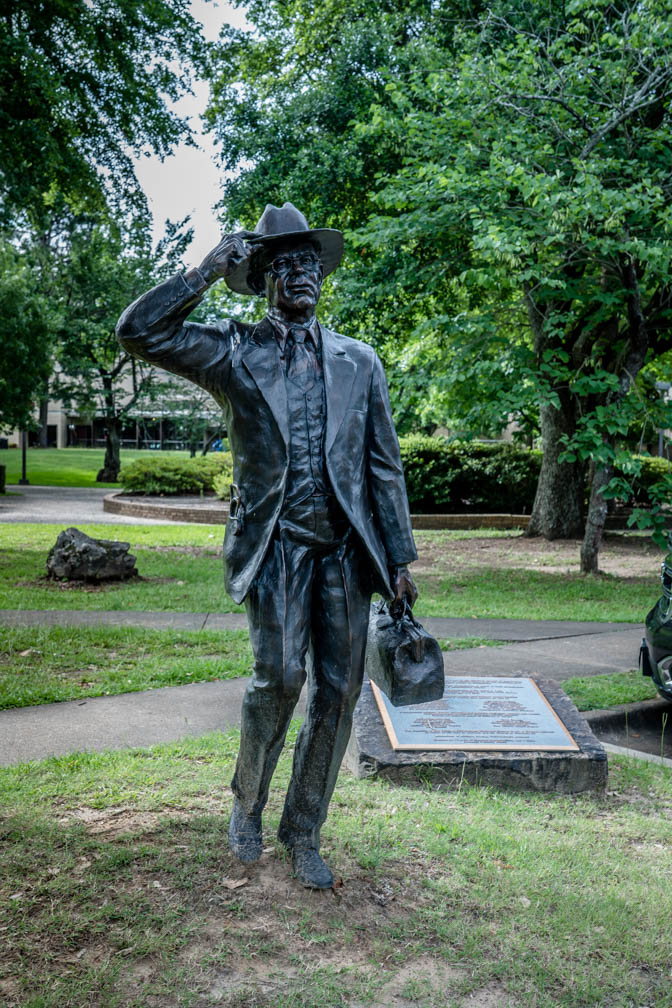
This is a statue honoring early doctors in Nacogdoches. They are the doctors who kept the grandparents sound and healthy. They were healers. They practiced their profession during the era when doctors made house calls.
Dr. George Crocket
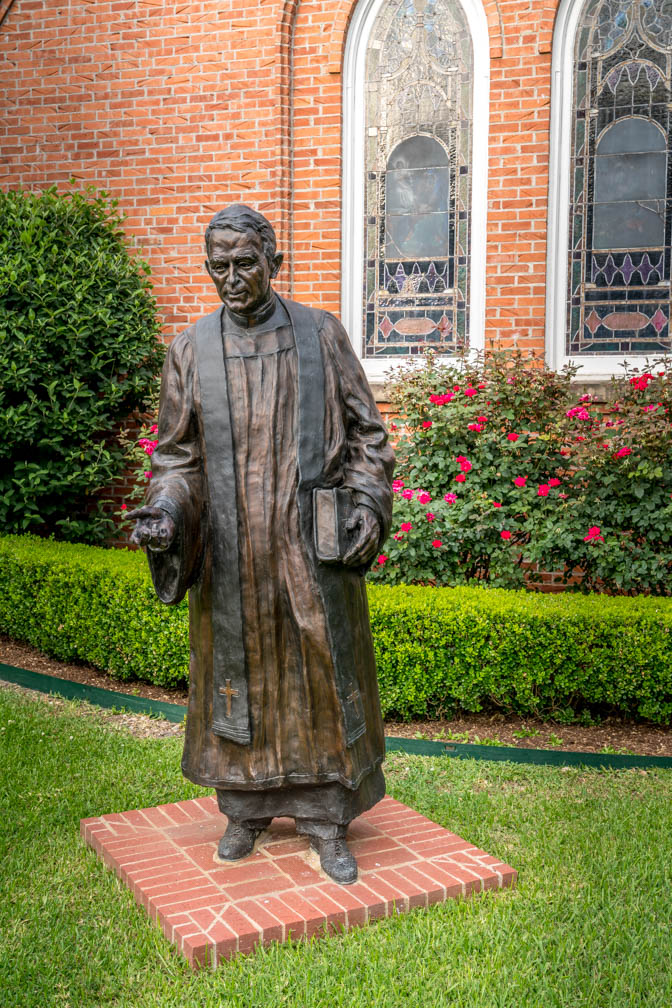
“Dr. George Crocket” was rector for the local Episcopal Church for 24 years. As well, he served as a professor of history and a dean at Stephen F. Austin State University. He is well respected for his book Two Centuries in East Texas and for his work establishing both Boy Scouts in Texas, as well as several other Episcopal congregations.
Stephen F. Austin

A magnificent statue of “Stephen F. Austin,” Father of Texas, stands directly in front of the university library. Austin is recognized for his leadership in establishing one of the first colonies in Texas. Known as the Old Three Hundred, his colony was a truly successful venture. The Austin statue was commissioned by faculty and students of the university.

The students refer to him as “Surfing Steve” because of how he is standing on the statue, it appears that he is surfing.
Children at Play
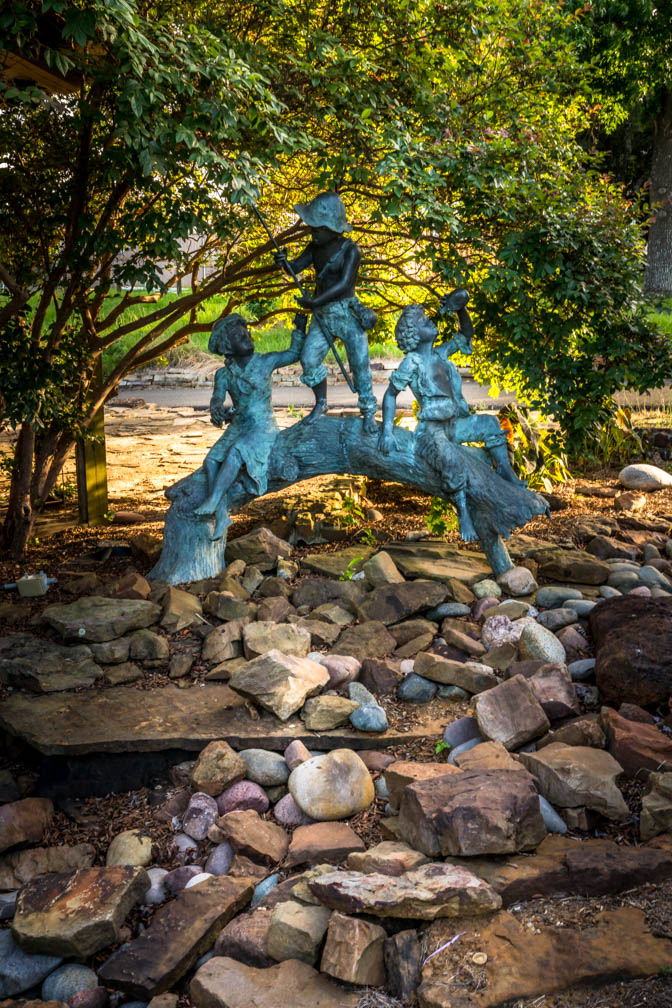
Another statue is found on the Stephen F. Austin State University campus at the children’s garden. The statue is located beside the gazebo on East College Street near University Drive. This delightful state is titled, “Children at Play”.
